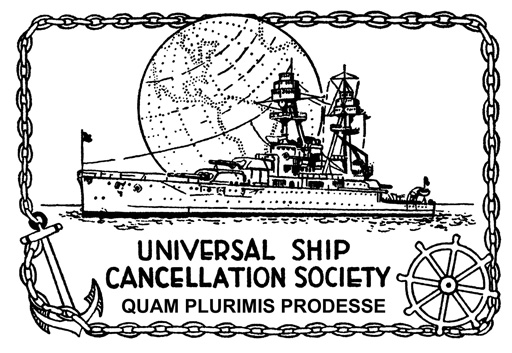-
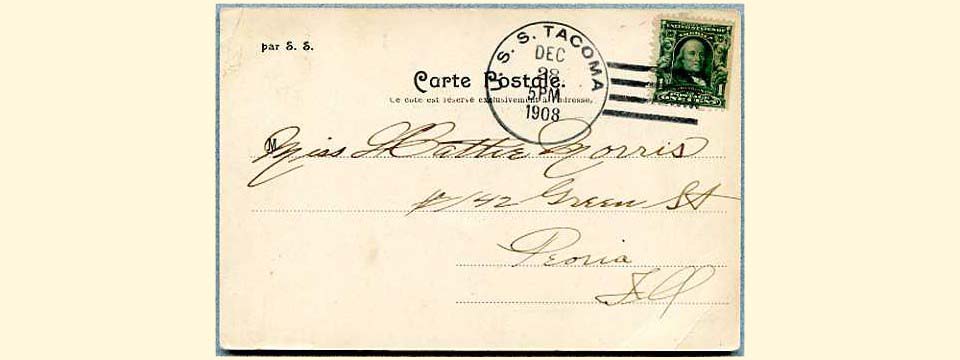
1900's
USS Tacoma CL-20 -
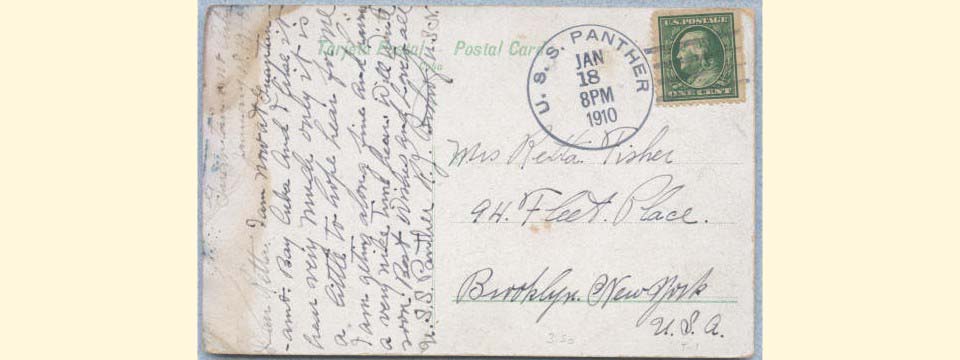
1910's
USS Panther AD-6 -
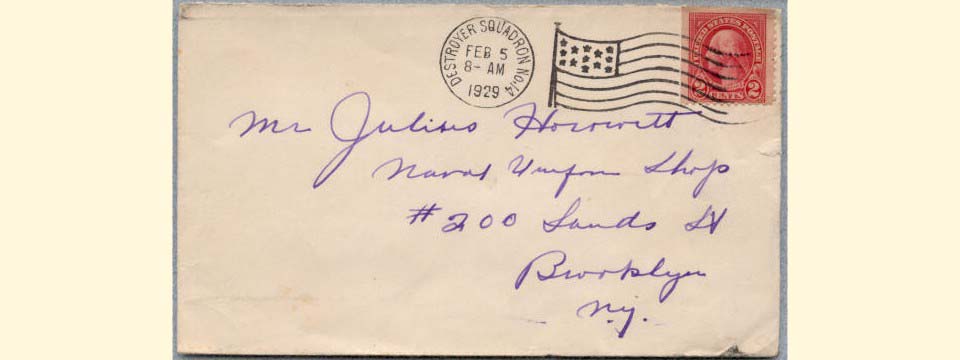
1920's
Destroyer Squadron 14 -
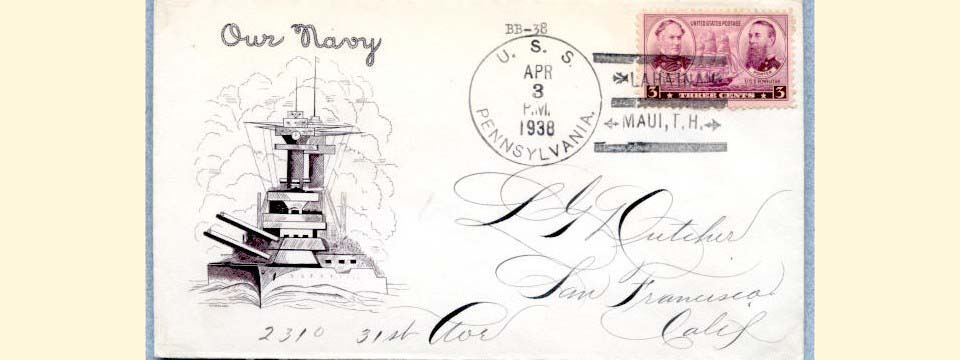
1930's
USS Pennsylvania BB-38 -
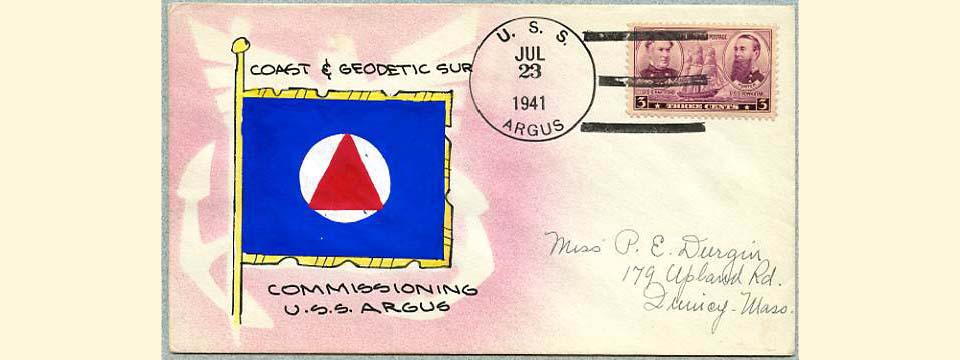
1940's
USS Argus PY-14 -
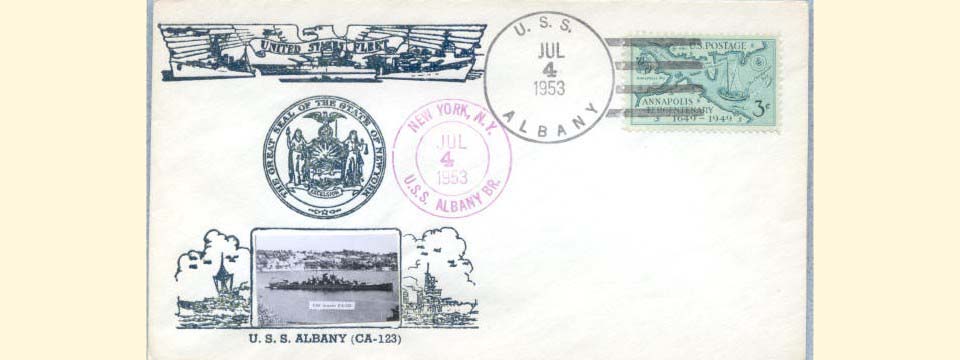
1950's
USS Albany CA-123 -
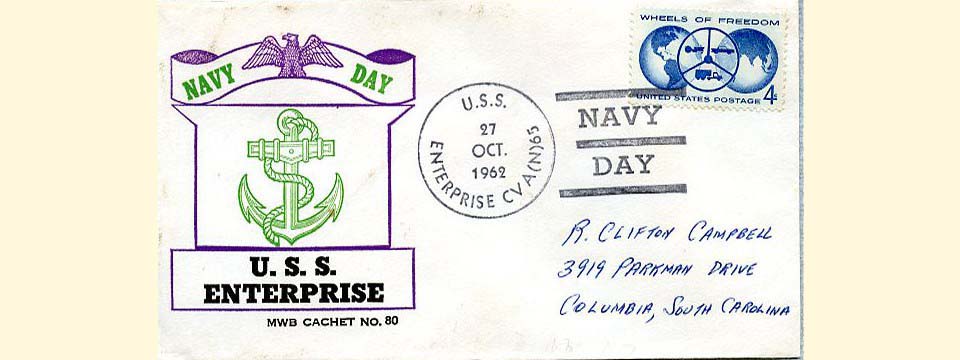
1960's
USS Enterprise CVN-65 -
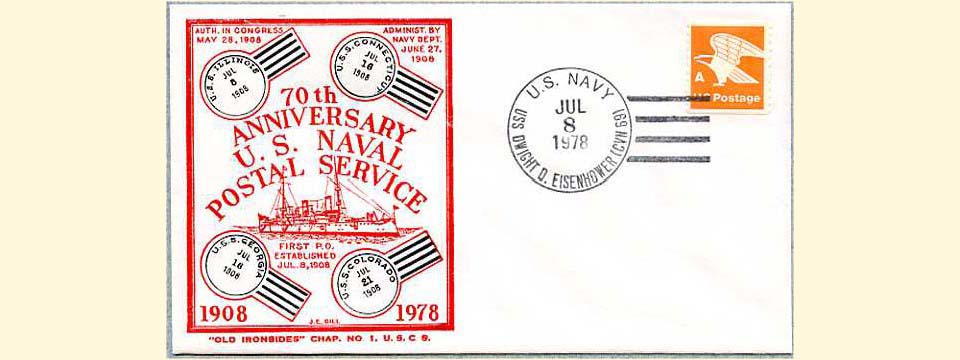
1970's
USS Dwight D Eisenhower CVN-69 -
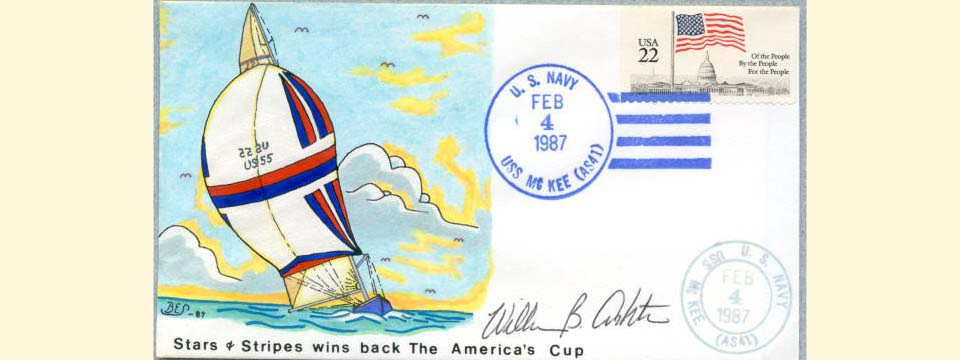
1980's
USS McKee AS-41 -

1990's
USS Abraham Lincoln CVN-72 -
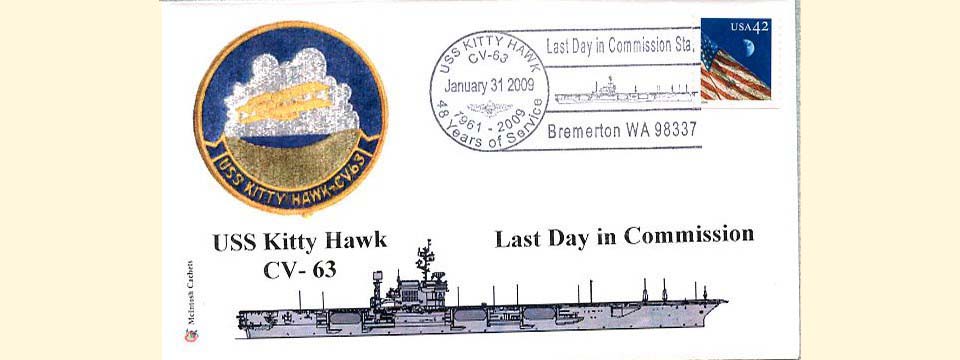
2000's
USS Kitty Hawk CV-63 -
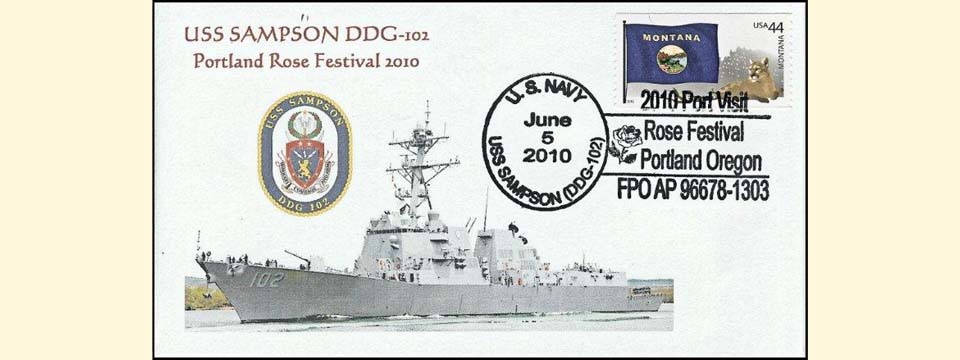
2010's
USS Sampson DDG-102
Current Status
The Naval Cover Museum is up and running. You may access its main page here.
What is a Naval Cover?
A Naval Cover is any envelope, postcard, or other postal medium that is mailed from or somehow related to a navy ship, location, or event. Beginning in 1908, post offices were established on board U.S. Navy ships and each ship had one or more postmarks to "cancel" the stamps used on the cover. The postmark, or cancellation, would usually have the ship's name and the date that the cover was cancelled.
Starting in the 1930's, covers with printed designs, called cachets, began appearing and established a large following. Many different cachets were designed and sent to various ships to be cancelled and mailed. Some cachets were designed for a specific ship while others were generic (perhaps for a holiday or commemorating an historical event) and sent to many different ships. World War II severely curtailed the creation and distribution of cachets and while covers with cachets are still created today, the phenomenon has never regained its pre-war level of enthusiasm.
Naval Covers present us with a snapshot of history; a window into a passing age. You hold history in your hand and wonder about the lives, the men and women, the events that were part of that era. Their image is preserved here. Come and visit them.
The Naval Cover Museum
The mission of the Naval Cover Museum is to be a digital archive of naval covers to aid in the preservation and research of this unique historical record and art form. To that end, the Museum is primarily an image repository glued together with lists and indexes. The Museum does not collect physical assets - just images and information.
Over the years the Museum took an inclusive approach and now allows a greater wealth of content as long as it is reasonably related to naval covers or associated ships/locations. This includes photos and documents from sailors and personnel. You never know when something that seems insignificant now will turn out to be significant later. Save for posterity.
The Museum has no physical location and does not have any physical inventory. All we have are scanned images provided by contributors.
The Naval Cover Museum is owned and operated by the Universal Ship Cancellation Society.

